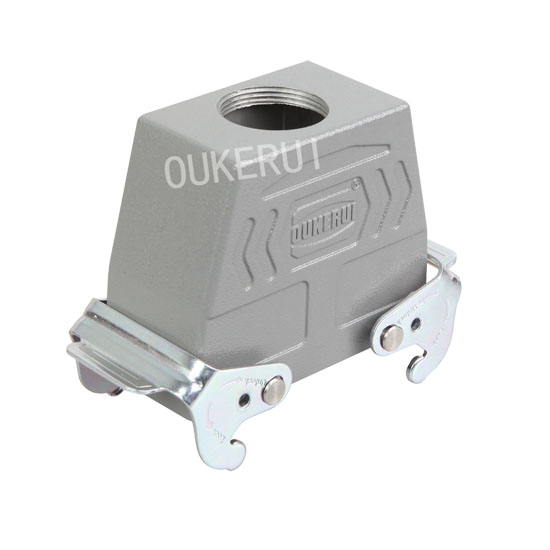Unveiling the Distinctive Features of Heavy Duty Connector Hoods
2024-04-12
In the intricate world of electrical engineering and industrial applications, every component plays a crucial role in ensuring efficiency, safety, and reliability. Among these components, connector hoods stand as guardians of electrical connections, providing protection and stability. However, not all hoods are created equal. Enter Heavy Duty Connector Hoods – robust, resilient, and distinctly different from their standard counterparts. Let's delve into the unique features that set Heavy Duty Connector Hoods apart and explore their significance in demanding environments.
Robust Construction:
One of the most striking differences between Heavy Duty Connector Hoods and standard connector hoods lies in their construction. Heavy Duty Connector Hoods are built to withstand the rigors of harsh industrial environments. Constructed from durable materials such as metal or high-grade plastics, these hoods offer superior resistance to impact, chemicals, and extreme temperatures. In contrast, standard connector hoods are often designed for lighter-duty applications and may not provide the same level of durability and protection.
Enhanced Environmental Protection:
Heavy Duty Connector Hoods excel in safeguarding electrical connections against environmental hazards. Designed with ingress protection (IP) ratings, they offer superior resistance to dust, moisture, and other contaminants. This makes them ideal for use in outdoor environments or areas prone to exposure to harsh weather conditions. Standard connector hoods, while adequate for indoor use, may lack the robust sealing and protection required for challenging industrial settings.
Secure Cable Management:
Another distinguishing feature of Heavy Duty Connector Hoods is their emphasis on efficient cable management. These hoods are engineered to accommodate a wide range of cable sizes and configurations, allowing for organized routing and protection of cables within machinery and equipment. They often feature additional accessories such as cable glands or strain relief mechanisms to ensure secure cable connections and prevent damage due to excessive strain or movement. In contrast, standard connector hoods may offer limited options for cable management, which can lead to tangled wires and increased risk of electrical faults.
Versatility and Customization:
Heavy Duty Connector Hoods are highly versatile and can be customized to meet specific application requirements. They come in various sizes, shapes, and configurations, allowing for seamless integration into different equipment and systems. Additionally, Heavy Duty Connector Hoods can be equipped with additional features such as locking mechanisms, EMI/RFI shielding, and explosion-proof ratings, making them suitable for a wide range of industrial applications. Standard connector hoods, while functional for basic applications, may lack the flexibility and customization options offered by Heavy Duty variants.
Conclusion:
In conclusion, Heavy Duty Connector Hoods stand out as formidable protectors of electrical connections in demanding industrial environments. With their robust construction, enhanced environmental protection, secure cable management features, and versatility, they offer unparalleled reliability and safety. While standard connector hoods may suffice for less demanding applications, Heavy Duty Connector Hoods are indispensable assets in critical systems where durability, resilience, and performance are non-negotiable. As industries continue to evolve and face ever-increasing challenges, Heavy Duty Connector Hoods will undoubtedly remain at the forefront of innovation, ensuring the seamless operation of vital infrastructure and machinery around the globe.



